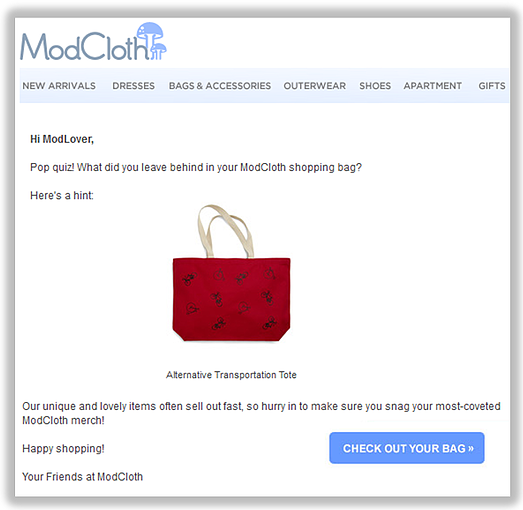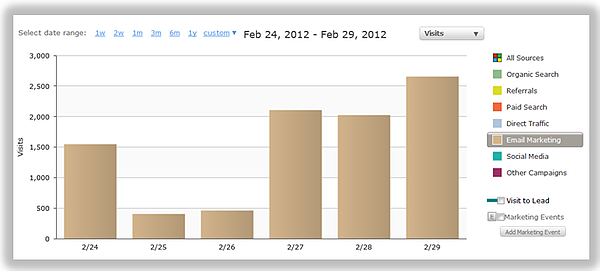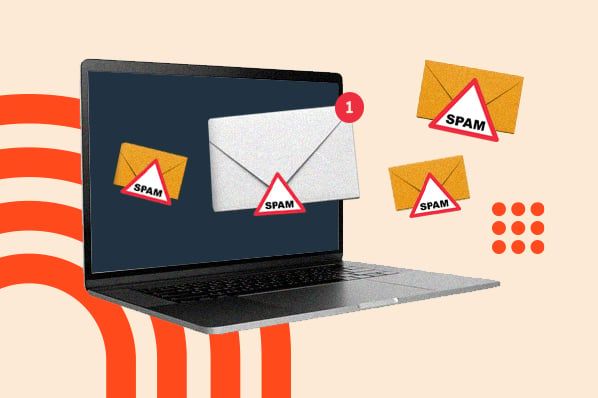There are a lot of ways to fail at marketing automation -- an incomplete content arsenal, poor sales and marketing alignment (also known as SMarketing), clunky marketing automation software, and the list goes on. But the companies that don't get burned by using marketing automation software incorrectly or prematurely all have one thing in common: they are using metrics to determine whether their marketing automation is effective. After all, how can you definitively determine success (or failure) without concrete metrics to back up your claims?
Do you know which inbound marketing metrics you should be tracking? Click here for a free guide.
Turns out marketers are feeling the pain of this crucial step, though. A Gleansight research report said that, when asked what is the most challenging aspect of marketing automation, 54% cited agreeing on the right metrics to monitor. And it's a difficult challenge -- depending on how and why you're using marketing automation, some individual metrics will be more important for you than others. But there are four basic types with which any company interested in implementing marketing automation should be concerned. Let's dive into those four types of metrics, and examine what specifically you could choose to measure to determine the effectiveness of your marketing automation.
Activity Metrics
Before you get started evaluating the effectiveness of your marketing automation strategy, you need to make sure your team is actually using your marketing automation software. After all, making a metrics-based determination of success doesn't mean much with a paltry sample size.
Keeping track of some basic activity metrics when you first implement your marketing automation solution will give you an indication of whether your investment is actually getting used. This is important because marketing automation can be a significant investment in time and money (or both), but if you aren't using the software -- because it's too time-intensive, it's complicated, ramp-up takes too long, etc. -- you can't expect to see any meaningful ROI. Here are two metrics you can look at to determine whether your team is using the marketing automation software you've invested in, or whether there's some barrier preventing them from making the most of your investment.
- Number of Emails Sent - There's much more to effective marketing automation than just sending email, but if you're trying to determine whether your team is making use of your new software investment, there's no simpler metric to look at. If they aren't, at the very least, sending emails through the software, it's a good indication there's a solution- or vendor-specific barrier.
- Setup of Quality Behavioral Triggers - If your team is sending emails actively with the software, you're still not home-free in establishing sufficient activity; they should also have quality behavioral triggers set up in the software. Often, marketers will use their marketing automation software to make simple email sending faster and easier, but it's not based on any customer or lead behaviors. And if that's all you're using the software for, you're making a gross over-investment. Look for triggers that send campaigns based on lead or customer activity, like this abandoned shopping cart email from retailer ModCloth.

This is an example of a company using marketing automation effectively -- their campaigns are triggered based on personalized insight into customer behaviors on their site (though it can also be based on off-site behaviors!). If you can verify both email sending volume and quality email triggers coming from your marketing automation solution, move on to analyze the next three metrics.
Response Metrics
Now that you know your team is actively using marketing automation, how do your leads and customers feel about being on the receiving end of it? Response metrics will help give you an indication of whether your automation is resonating with your audience. There are more qualitative and time intensive ways to determine this, too -- I encourage you to continually ask for feedback from your leads and customers on your emails, offers, and content. But if you're trying to look at a glance whether your marketing automation is well-received, start by checking these metrics.
- Open and Click-Through Rate - These metrics are important because they indicate that your emails are well crafted -- from subject line, to copy, to offer. If you're suffering lower open rates or click-through rates, consider some email A/B testing to improve these metrics.
- Site Traffic - If your emails are driving conversions, you should see an uptick in web traffic, too. Check your traffic sources, and see how much more traffic is being driven by email than before you implemented your marketing automation solution.

- Reconversions - The more times your leads convert, the more opportunities you have to confirm the lead intelligence you already have, and add more robust information to it. Your marketing automation should be a major driver in this effort. If leads aren't driven to reconvert from the offers in your automated emails, consider re-evaluating both the triggers you've set up, and how you've mapped your content.
- Unsubscribe Rate - Your list can (and should, if you're practicing good email list hygiene) depreciate for reasons unrelated to marketing automation. But your unsubscribe rate is a good indication of whether your recipients are responding well to your marketing automation. Your rate should stay under 1% at all times. If your unsubscribe rate is higher than 1%, or higher now than it was before implementing a marketing automation solution, it's a good indication that the content you're sending is not relevant, and you may need to do better list segmentation.
Efficiency Metrics
Efficiency metrics will give you an indication of whether all of this marketing automation is making a dent in some of your most important SMarketing metrics. If you're using marketing automation effectively, you should see the following metrics positively impacted.
- Cost Per Customer - Without a good marketing automation system, Sales and Marketing may find they have a funnel that's very top heavy with leads, but most are never nurtured to the point that they can convert into a customer. But if you're using marketing automation effectively -- by nurturing your leads based on their on- and off-site behaviors -- you should start to see a lower cost per customer as more of those top of the funnel leads don't get wasted, and instead get utilized by the sales team that converts them into customers.

- MQLs Generated Through Lead Nurturing - MQLs are "marketing qualified leads," or leads that are more likely to become a customer based on their pre-close activity. If you've effectively nurtured leads through marketing automation, your number of MQLs should increase.
- Sales-Accepted Leads - With more reconversions comes better lead intel that helps inform sales about the leads in their funnel. It also creates more educated leads that are nurtured further down the funnel, making them more likely to close from Sales' perspective. If your number of sales-accepted leads is increasing, it's a good indication your marketing automation is helping you be more efficient. If this -- or your MQL -- number is low, however, you might have a lead scoring problem or a SMarketing alignment problem.
Value Metrics
Here's the money shot -- pun intended. Value metrics will give you an indication of whether your marketing automation implementation is actually affecting your bottom line. You know, making you money. Here are some metrics you can use to know how much value you're getting out of your marketing automation.
- Revenue Generated - What's a better indication of the value of a system than how much revenue is attributed to it? When looking at your revenue growth, monitor not only whether you're closing more deals, but also whether the average sale price is increasing along with it.
- Cost of Investment Versus Revenue Generated - Now that you know how much revenue you can attribute to customers nurtured with marketing automation, how does that compare with the total cost of ownership? You may be generating more revenue with marketing automation -- but at what expense? The cost of the software and the staff running it shouldn't exceed the monetary gains you receive from it.
- Close Rate on Marketing-Sourced Leads - Marketers are consistently looking to prove their value to sales. Yes, one way to do that is showing them the revenue -- money talks, right? But Gleansight research reported that 71% of top performers also use the close rate on marketing-sourced leads as a metric to glean the value of their marketing automation. If you can show sales that the leads you're providing them since you've implemented marketing automation are closing at a higher rate -- well, that's pretty great for a harmonious SMarketing relationship!
What types of metrics do you use to determine whether your marketing automation is effective? Share your recommendations in the comments!
Image credit: adactio





![How to create a landing page with high ROI [+ expert and data-backed tips]](https://53.fs1.hubspotusercontent-na1.net/hubfs/53/%5BUse-2.webp)





![How to get sponsored on Instagram [what 500+ social media marketers are looking for]](https://53.fs1.hubspotusercontent-na1.net/hubfs/53/paid%20partnership%20instagram.png)

